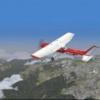
Sign in to follow this
Followers
0

XP11 beta, full throttle down runway in GA single prop immediate left hard turning? Realistic?
By
theskyisthelimit, in The X-Plane General Discussions Forum


By
theskyisthelimit, in The X-Plane General Discussions Forum